What is a Compliance Matrix? Everything You Need to Know
A compliance matrix serves as the cornerstone of successful government proposal development, transforming complex RFP requirements into organized, trackable elements that ensure no critical detail gets overlooked.
This systematic approach to proposal management has become indispensable in today's competitive federal contracting environment, where even minor omissions can result in immediate disqualification and millions of dollars in lost opportunities.
Understanding how to effectively construct and utilize a compliance matrix can mean the difference between winning lucrative contracts and watching competitors secure business that should have been yours.
Modern government contracting demands precision, accountability, and comprehensive response capabilities that go far beyond traditional proposal writing approaches.
The compliance matrix provides the structured framework that enables proposal teams to navigate increasingly complex solicitations while maintaining complete alignment with government requirements.
Organizations that master this critical tool consistently outperform competitors by demonstrating thorough understanding of customer needs and meticulous attention to regulatory details.
Understanding the Compliance Matrix: Foundation of Proposal Excellence
A compliance matrix represents a systematic cross-reference tool that maps every requirement, instruction, and evaluation criterion from an RFP to specific sections within your proposal response. This comprehensive tracking mechanism ensures complete coverage of all solicitation elements while providing evaluators with clear visibility into how your organization addresses each government need. The matrix functions as both an internal project management tool and an external demonstration of your team's methodical approach to requirements compliance.
The fundamental structure of a compliance matrix typically includes columns for RFP requirement identification, detailed descriptions of each requirement, corresponding proposal section references, compliance status indicators, and responsibility assignments. Advanced matrices incorporate additional elements such as risk assessments, completion status tracking, and cross-references to supporting documentation that enhance both internal coordination and external evaluation processes.
Beyond basic requirement tracking, the compliance matrix serves as a strategic planning document that influences proposal architecture, resource allocation, and team coordination strategies. Successful contractors use this tool to identify capability gaps early in the proposal development process, enabling proactive teaming decisions and subcontracting arrangements that strengthen overall competitive positioning. This forward-looking approach transforms reactive proposal writing into strategic business development that positions organizations for sustained success in government markets.
The matrix also functions as a quality assurance mechanism that supports systematic review processes throughout proposal development. Color team reviews become more efficient when evaluators can quickly verify that all requirements have been addressed comprehensively, while proposal managers gain real-time visibility into development progress and potential compliance gaps. This systematic approach significantly reduces the risk of last-minute discoveries that could compromise proposal quality or submission deadlines.
Essential Components of an Effective Compliance Matrix
The most critical element of any compliance matrix is comprehensive RFP requirement identification and extraction. This process involves methodical analysis of the entire solicitation document, with particular attention to sections C (Statement of Work), L (Instructions to Offerors), and M (Evaluation Factors) in federal proposals. Each requirement must be captured with sufficient detail to enable accurate response development while maintaining clear traceability to original source documents.
Requirement descriptions within the compliance matrix should provide enough context for proposal writers to understand both the explicit request and underlying government objectives. Effective descriptions often include mandatory elements, evaluation weights, and compliance criteria that help writers tailor their responses to maximize scoring potential. This level of detail transforms the matrix from a simple checklist into a strategic guidance document that influences content development decisions throughout the proposal process.
Proposal section mapping represents another crucial component that enables efficient navigation between RFP requirements and corresponding responses. Detailed page references, paragraph numbers, and section identifiers allow evaluators to quickly locate relevant information while supporting internal quality assurance processes. Many successful contractors include both primary and secondary references, acknowledging that complex requirements often require responses distributed across multiple proposal sections.
Status tracking mechanisms within the compliance matrix enable real-time monitoring of proposal development progress. Common status indicators include "Not Started," "In Progress," "Complete," and "Under Review," providing proposal managers with immediate visibility into project health and potential bottlenecks. Advanced matrices incorporate risk indicators that flag complex or problematic requirements requiring additional attention or specialized expertise.
Responsibility assignments ensure accountability and prevent duplicated effort across distributed proposal teams. Clear owner identification enables efficient coordination while supporting escalation processes when issues arise. Many organizations include both primary and backup assignees to maintain continuity when key personnel become unavailable during critical development phases.
Strategic Benefits of Implementing a Compliance Matrix
The primary advantage of implementing a robust compliance matrix is risk mitigation through comprehensive requirement coverage. Government evaluators conduct initial compliance reviews that eliminate non-responsive proposals before detailed technical evaluations begin, making adherence to all solicitation requirements absolutely critical for competitive success. The matrix provides systematic verification that every requirement has been identified, assigned, and addressed appropriately within the proposal response.
Improved team coordination represents another significant benefit, particularly for large, distributed proposal efforts involving multiple disciplines and geographic locations. The compliance matrix serves as a central communication hub that enables efficient information sharing while preventing duplicated effort across team members. This coordination becomes particularly valuable during compressed proposal schedules when efficient resource utilization directly impacts response quality and submission timelines.
Enhanced proposal quality emerges naturally from the systematic approach that compliance matrix implementation encourages. Writers develop more focused, requirements-driven content when they clearly understand what government evaluators expect to find in each proposal section. This targeted approach reduces unnecessary verbiage while ensuring that all responses directly address stated evaluation criteria and government objectives.
The matrix also facilitates more effective review processes throughout proposal development. Color team evaluators can quickly identify content gaps, assess response adequacy, and provide targeted feedback that improves overall proposal quality. This systematic review capability becomes particularly valuable for complex technical proposals where subject matter experts must verify that specialized requirements have been addressed accurately and completely.
Cost reduction benefits accrue from improved efficiency and reduced rework throughout the proposal development process. Teams that implement comprehensive compliance matrix systems typically experience fewer last-minute scrambles to address overlooked requirements, reduced editing cycles, and more predictable proposal development timelines. These efficiency gains translate directly into lower proposal costs and improved resource utilization for future opportunities.
Building Your Compliance Matrix: Step-by-Step Process
The first step in creating an effective compliance matrix involves thorough RFP analysis and requirement extraction. This process requires careful reading of the entire solicitation document, with particular attention to embedded requirements that may appear in unexpected locations. Many organizations utilize automated tools to identify requirement-related keywords such as "must," "shall," "will," and "should" that indicate mandatory or scored elements within the solicitation.
Modern government contracting software platforms have revolutionized this traditionally manual process by providing automated requirement extraction capabilities. These advanced systems can process complex RFP documents in minutes rather than hours, identifying potential requirements based on linguistic patterns and proposal best practices. However, human review remains essential to ensure accuracy and completeness of automated extraction results.
Template development should reflect organizational standards while accommodating opportunity-specific requirements. Effective templates typically include standardized columns for requirement identification, descriptions, proposal references, status tracking, and responsibility assignments. Advanced templates incorporate evaluation criteria references, risk assessments, and cross-references to supporting documentation that enhance both internal coordination and external evaluation processes.
Requirement prioritization within the compliance matrix helps focus team attention on the most critical elements first. High-priority items typically include mandatory technical requirements, key evaluation factors, and elements with significant scoring weights. This prioritization enables efficient resource allocation while ensuring that essential requirements receive appropriate attention even under compressed development schedules.
Team training and coordination processes ensure effective matrix utilization across all proposal participants. Clear guidelines for status updates, requirement interpretations, and escalation procedures prevent confusion while maintaining matrix accuracy throughout the development process. Regular team meetings focused on matrix review help identify potential issues early while ensuring consistent understanding of requirement interpretations across all contributors.
Advanced Compliance Matrix Techniques
Integration with modern government contract management software platforms enables sophisticated tracking and reporting capabilities that extend far beyond basic spreadsheet functionality. These advanced systems provide real-time collaboration features, automated status updates, and integration with other proposal development tools that streamline the entire response process. Organizations implementing these solutions typically experience significant improvements in proposal quality and development efficiency.
Cross-referencing capabilities within advanced compliance matrix systems enable tracking of requirements that span multiple proposal sections. Complex technical requirements often require responses distributed across management, technical, and past performance volumes, making comprehensive cross-referencing essential for complete requirement coverage. Advanced matrices include primary and secondary reference fields that acknowledge this complexity while maintaining clear traceability for evaluators.
Risk assessment integration helps identify potentially problematic requirements early in the proposal development process. Requirements marked as high-risk might include those requiring specialized expertise, extensive coordination with teaming partners, or innovative technical approaches that could affect proposal competitiveness. This early identification enables proactive mitigation strategies that prevent last-minute complications during proposal finalization.
Automated compliance checking represents the cutting edge of compliance matrix technology, utilizing artificial intelligence to verify that proposal content adequately addresses all identified requirements. These systems analyze proposal text against matrix requirements, identifying potential gaps or inadequate responses before final submission. While human review remains essential, automated checking provides valuable quality assurance that supplements traditional review processes.
The emerging field of AI for proposals offers exciting possibilities for enhancing compliance matrix effectiveness through intelligent content analysis and requirement interpretation. These advanced systems can suggest optimal proposal organization, identify content gaps, and recommend response strategies based on successful historical patterns. Organizations that leverage these capabilities often gain significant competitive advantages in complex proposal environments.
Industry-Specific Applications and Considerations
Federal contracting applications of compliance matrix systems require specialized understanding of government procurement regulations and evaluation methodologies. The Federal Acquisition Regulation (FAR) and agency-specific supplements create complex compliance landscapes that standard commercial matrices may not adequately address. Successful federal contractors develop specialized templates that incorporate regulatory requirements alongside technical and programmatic elements.
The modern GovCon environment increasingly emphasizes cybersecurity, sustainability, and small business participation requirements that must be reflected in compliance matrix design. These evolving priorities create new categories of requirements that traditional matrices might overlook, necessitating regular template updates and team training to maintain effectiveness. Organizations that proactively adapt their compliance processes to emerging government priorities often secure competitive advantages in the marketplace.
Complex multi-volume proposals common in government contracting require sophisticated compliance matrix designs that manage cross-references and dependencies between technical, management, and cost volumes. Advanced matrices include volume-specific tracking capabilities while maintaining overall proposal coherence through integrated requirement management. This complexity demands specialized expertise and robust quality assurance processes to prevent gaps or inconsistencies that could affect evaluation outcomes.
When selecting technology platforms to support compliance matrix processes, many organizations evaluate solutions like government bid software that provide specialized government contracting capabilities.
Building Organizational Expertise
Developing organizational compliance matrix expertise requires systematic training programs that educate team members on requirement identification, matrix construction, and effective utilization throughout the proposal process. Many successful organizations establish centers of excellence that develop standardized processes, provide ongoing training, and support continuous improvement initiatives. These investments in capability development often yield significant returns through improved win rates and reduced proposal costs.
Career development opportunities in government contracting increasingly emphasize compliance matrix expertise as organizations recognize its impact on proposal success. Professionals pursuing GovCon jobs should develop competencies in requirement analysis, systematic tracking, and quality assurance processes that demonstrate their ability to contribute to winning proposals. Understanding how compliance matrices integrate with broader capture and proposal management processes provides valuable expertise that employers highly value.
Technology proficiency represents an increasingly important aspect of compliance matrix expertise as organizations adopt sophisticated software platforms. Professionals should understand both traditional spreadsheet-based approaches and advanced automated systems that leverage artificial intelligence and machine learning capabilities. This technological fluency enables more effective utilization of available tools while supporting organizational digital transformation initiatives.
Cross-functional collaboration skills become essential as compliance matrix development increasingly involves diverse teams spanning business development, technical expertise, contracts, and proposal management disciplines. Understanding how different organizational functions contribute to matrix development and utilization enhances overall effectiveness while supporting career advancement opportunities across multiple functional areas.
Maximizing Your Compliance Matrix Success with Procurement Sciences
While traditional compliance matrix approaches provide valuable frameworks for requirement tracking, today's competitive government contracting environment demands advanced analytical capabilities that extend far beyond manual spreadsheet management. Procurement Sciences' AI-powered GovCon software revolutionizes compliance matrix development by automating requirement extraction, providing intelligent gap analysis, and generating comprehensive tracking systems that dramatically improve proposal quality and development efficiency.
Our comprehensive platform transforms compliance matrix creation from time-consuming manual processes into rapid, automated workflows that leverage advanced natural language processing to identify and categorize requirements from complex RFP documents. The system automatically generates preliminary matrices based on solicitation analysis while providing customization capabilities that accommodate organizational standards and opportunity-specific needs.
The AI-powered requirement analysis module continuously monitors proposal content against matrix requirements, identifying potential gaps or inadequate responses before they compromise submission quality. This dynamic capability ensures that your proposals maintain complete compliance throughout the development process while providing real-time feedback that enables proactive issue resolution and continuous quality improvement.
Procurement Sciences' integrated approach combines compliance matrix management with advanced proposal development capabilities, enabling seamless transition from requirement tracking to winning content creation. The platform's collaborative features ensure that distributed teams maintain synchronized understanding of requirements while automated status tracking provides proposal managers with real-time visibility into development progress and potential risks.
By partnering with Procurement Sciences, your organization gains access to the most advanced compliance matrix capabilities available in the government contracting market. Our AI-powered platform transforms requirement tracking from manual administrative burden into strategic advantage, enabling you to develop more responsive proposals while significantly reducing development time and costs. The result is dramatically improved compliance accuracy, enhanced proposal quality, and sustainable competitive advantage in the complex federal marketplace.
The compliance matrix represents far more than a simple tracking tool - it embodies a systematic approach to government proposal development that transforms reactive response writing into strategic requirement fulfillment. Organizations that master advanced matrix methodologies while leveraging cutting-edge technology solutions position themselves for sustained success in the evolving federal contracting landscape where precision and compliance determine competitive outcomes.
Click here to schedule your free demo of Procurement Sciences' AI GovCon platform today.


%20(1)%20(1).png?width=1440&height=711&name=PSciAI-Save-time.-Deliver-faster.-Win-More-(Black)%20(1)%20(1).png)
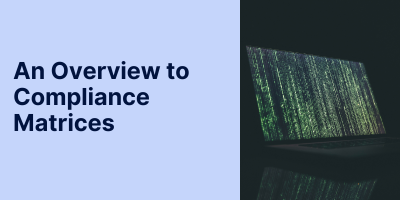



.png)

%20(1200%20x%20600%20px).png)
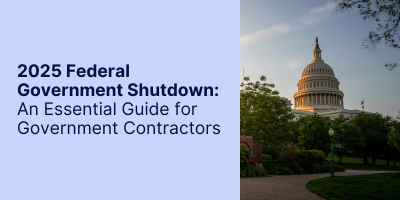
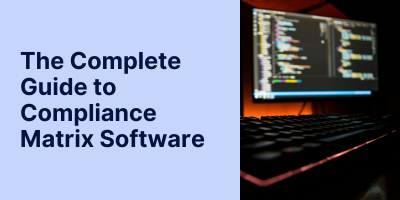
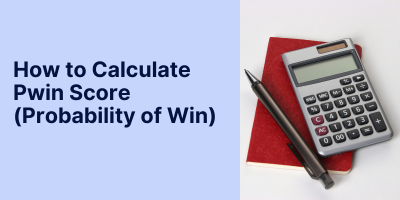
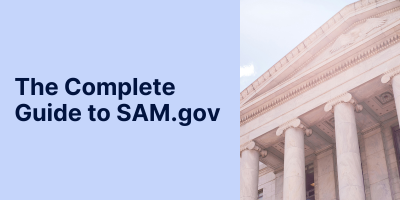
-2.png)
-2.png)

